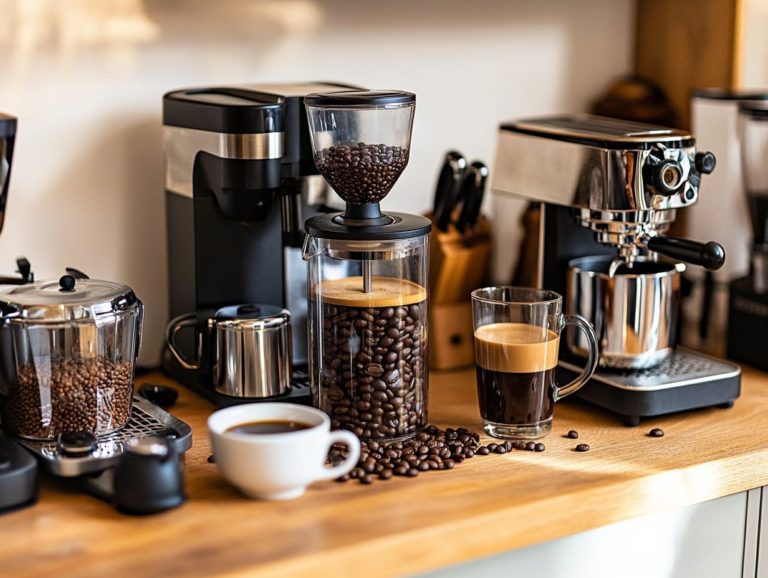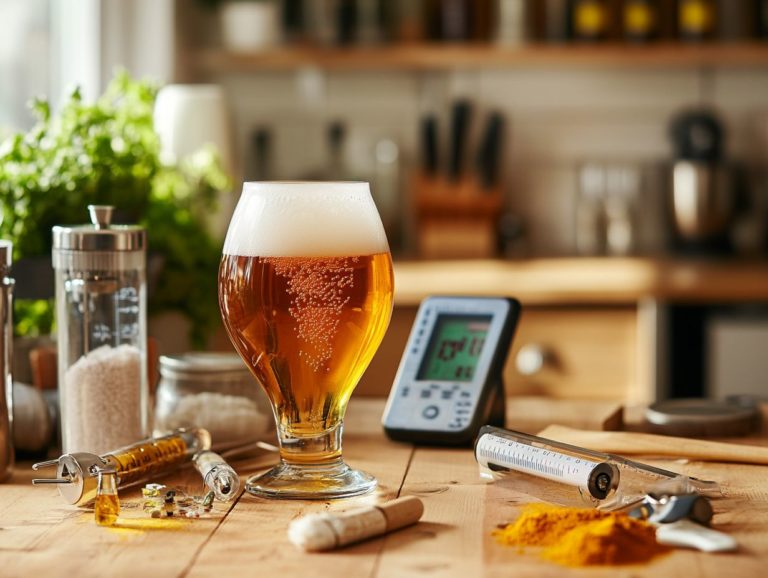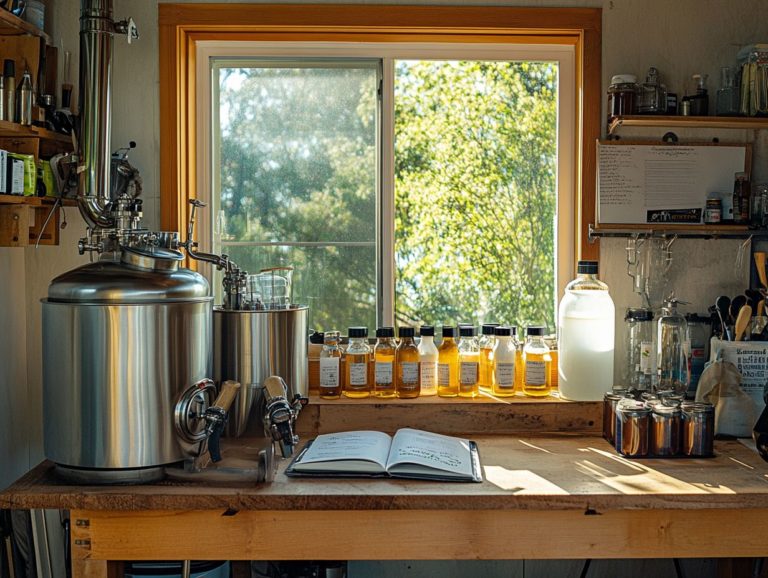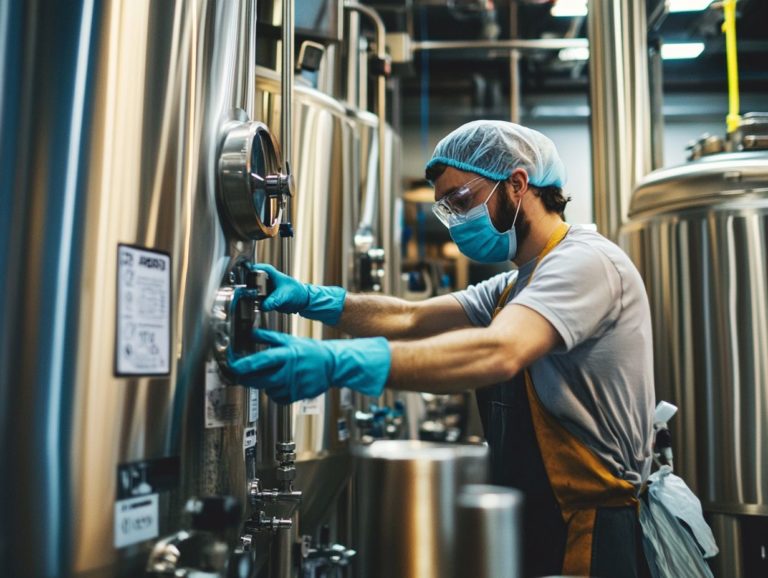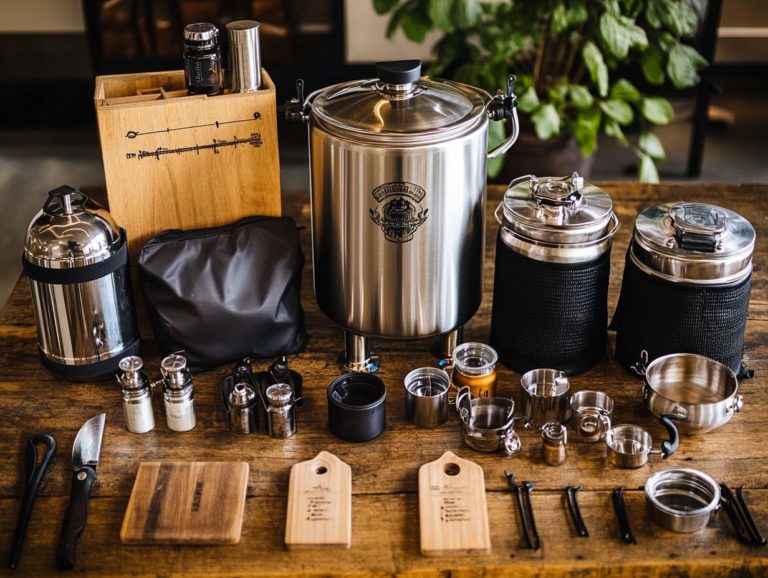How to Properly Clean Your Brewing Equipment
Contents
- How to Properly Clean Your Brewing Equipment
- Key Takeaways:
- Why is Cleaning Your Brewing Equipment Important?
- What Supplies Do You Need for Cleaning Brewing Equipment?
- Tips for Maintaining Clean Brewing Equipment
- Common Mistakes to Avoid When Cleaning Brewing Equipment
- Frequently Asked Questions
- What tools do I need to properly clean my brewing equipment?
- Why is it important to regularly clean my brewing equipment?
- How often should I clean my brewing equipment?
- Can I use regular household cleaners to clean my brewing equipment?
- How should I clean my brewing equipment?
- Is it necessary to sanitize my brewing equipment after cleaning?
How to Properly Clean Your Brewing Equipment
Want to ensure your homebrew tastes amazing? Maintaining the cleanliness of your brewing equipment is paramount for crafting exceptional beverages. If you don t clean your equipment, it can lead to bad flavors, germs, and ruined beer.
This guide delves into the significance of cleaning your brewing tools, details the necessary supplies, and offers a comprehensive step-by-step process for effectively cleaning and sanitizing your equipment. You’ll also discover valuable tips for upholding cleanliness, preventing microbe growth, and identifying common pitfalls to avoid.
Whether you re just starting out or you re a seasoned brewer, this information will empower you to keep your brewing setup in pristine condition.
Key Takeaways:
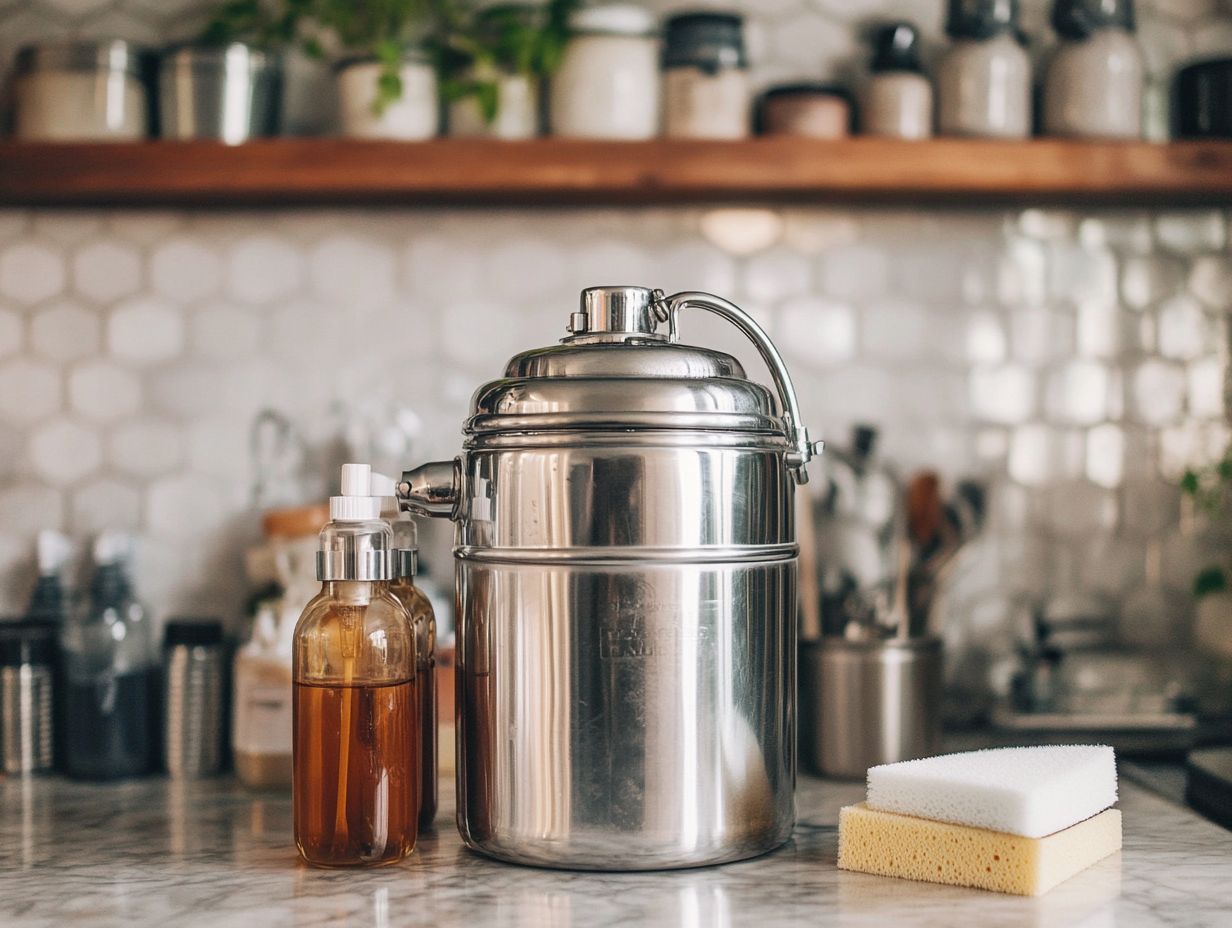
- Properly cleaning your brewing equipment is crucial for maintaining the quality and safety of your beer. Neglecting to clean can lead to bad flavors and contamination.
- To effectively clean your brewing equipment, you will need hot water, an alkaline cleaning solution, and tools for scrubbing and soaking. Regularly restocking these supplies is important for maintaining clean equipment.
- Following a step-by-step cleaning process, including disassembling, rinsing, scrubbing, and sanitizing, is essential for thoroughly cleaning your brewing equipment. Neglecting any steps can result in incomplete cleaning and potential contamination.
Why is Cleaning Your Brewing Equipment Important?
Cleaning your brewing equipment is essential for maintaining the quality and safety of your homebrew. Bacteria, yeast, and dirt can accumulate, leading to off-flavors and spoilage that can undermine the fermentation process and ruin the taste of your beer.
By committing to a regular cleaning and sanitizing routine for your brewing tools such as your fermentor, hoses, and bottles you can effectively ward off unwanted microbial growth. This is essential for ensuring a smooth fermentation process, vital for crafting exceptional homebrew.
Using strong cleaning agents like PBW, Oxiclean, and StarSan keeps all surfaces free of residues that could jeopardize your brew day or bottling day. Choosing these trusted brands ensures thorough surface cleaning and sanitation, providing maximum protection against microbes.
What Happens if You Don’t Clean Your Brewing Equipment?
Don’t risk your hard work! Neglecting to clean your brewing equipment opens the door to harmful bacteria and microbes that can wreak havoc on your beer, leading to fermentation issues and bad flavors.
This isn’t merely a minor inconvenience; it can result in serious contamination that compromises not just the taste but also the overall quality of your final product. Residues and dirt cling to various components of your brewing setup, creating a perfect breeding ground for harmful bacteria and yeast.
These unwelcome guests can introduce bad flavors that ruin your meticulous brewing efforts, and in some cases, they might even spoil an entire batch. Therefore, maintaining impeccable hygiene throughout the brewing process is crucial. By ensuring that everything is cleaned and sanitized, you can safeguard your creations from unwanted elements, ultimately preserving the intended flavors and quality of your beer.
What Supplies Do You Need for Cleaning Brewing Equipment?
To effectively clean your brewing equipment, you ll want to gather a selection of essential supplies, including cleaning agents like PBW, Oxiclean, StarSan, and Iodophor. These products are critical for both cleaning and sanitizing, expertly breaking down dirt buildup and eliminating microbes to ensure your brewing process remains safe and efficient.
Don t forget to have hot water on hand, a spray bottle for easy application, and non-abrasive scrubbing tools to achieve those spotless results. Choosing food-safe cleaning agents is crucial; no one wants harmful residues lurking around to spoil the flavor of their beer. It’s also recommended to use sanitizers that leave no residue, ensuring safety and flavor retention.
Step-by-Step Guide to Cleaning Your Brewing Equipment
Cleaning your brewing equipment demands a meticulous approach to guarantee that every surface is devoid of dirt and germs, as these unwelcome guests can compromise the flavor of your beer. By adhering to a structured, step-by-step guide, you ll be able to effectively clean and sanitize your gear, getting ready for your best brew days yet!
- Start by disassembling your equipment, then rinse it with hot water.
- Next, apply a suitable cleaning agent and either scrub or soak the components thoroughly.
- Once that s done, give everything a thorough rinse before moving on to the cleaning process.
Each step in this routine is essential for maintaining the integrity of your brewing process, ensuring that your homebrew remains both delicious and safe to enjoy.
Disassemble Your Equipment
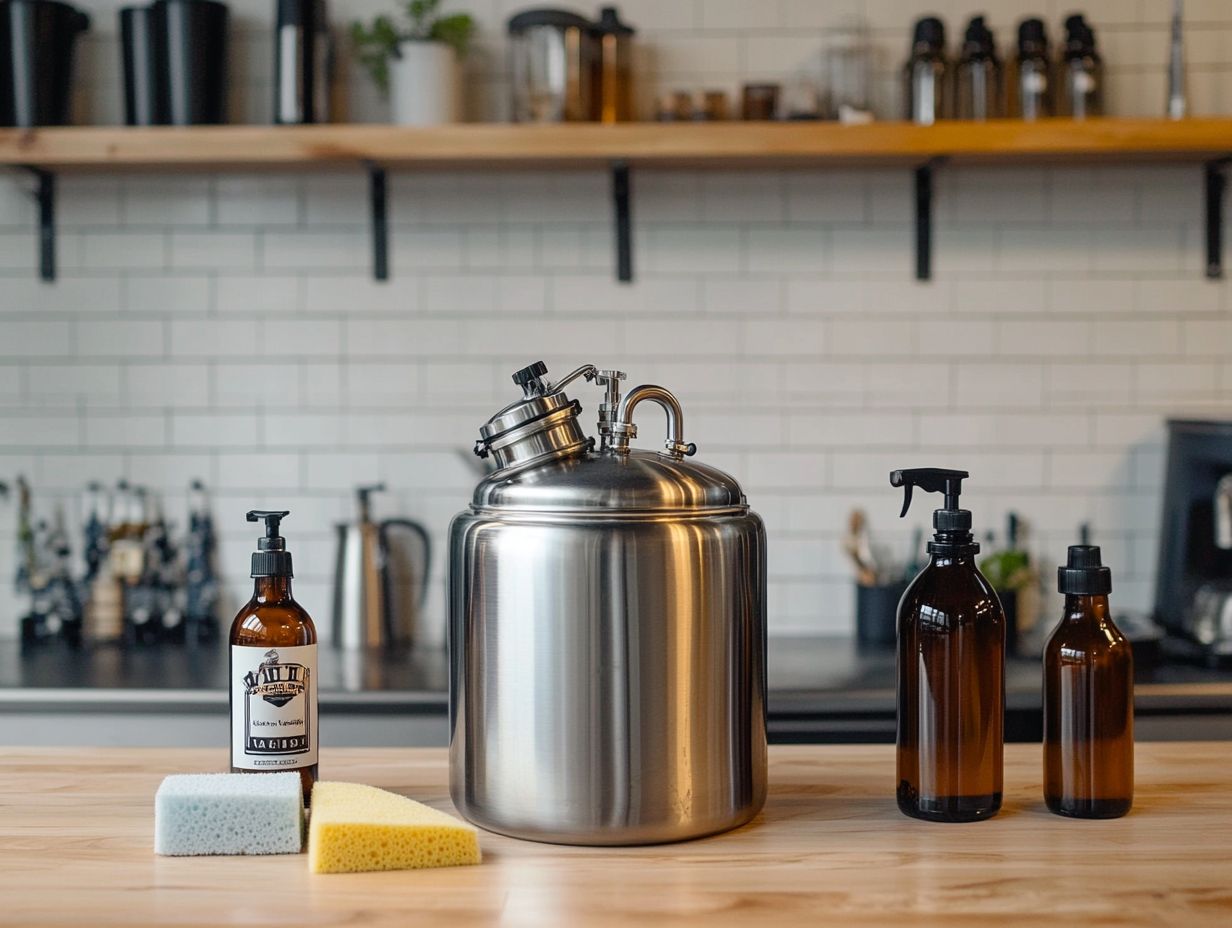
The first step in cleaning your brewing equipment involves disassembling it with care, ensuring that all components like the fermentor, hoses, and bottles are properly separated for a thorough cleanse.
By taking the time to meticulously break down each part, you gain access to tricky areas that often harbor unwanted residues. This eliminates any chance for hidden dirt or bacteria to cause chaos in your next batch.
This comprehensive sanitation strategy is vital for maintaining the integrity of your brewing process and significantly impacts the quality and flavor of your final product. Employing specific cleaning tools will enhance your process, ensuring that every nook and cranny is reached for a comprehensive cleanse.
Neglecting to clean those concealed spaces can lead to contamination, resulting in off-flavors or spoilage that could sabotage months of hard work. Therefore, adopting a systematic disassembly and cleaning routine not only enhances the longevity of your equipment but also guarantees consistent brewing excellence.
Rinse with Hot Water
After you ve disassembled your equipment, the next step is to rinse all components with hot water. This action is essential for removing any loose dirt and germs.
This step is crucial for loosening stubborn residues that may cling to surfaces and significantly reducing the number of bacteria and microbes present. The heat from the water works wonders, breaking down grease and grime, making it easier for you to ensure that each part is thoroughly cleaned.
A meticulous rinse prepares your equipment for the application of cleaning agents, enhancing their effectiveness. By ensuring that all components are free from contaminants, you create an ideal environment for a deeper clean, minimizing cross-contamination and upholding your hygiene standards. This step is crucial for maintaining the overall quality and safety of your beer.
Use a Cleaning Solution
Next, apply a suitable cleaning solution like PBW, Oxiclean, or StarSan to your brewing equipment, ensuring that every surface is thoroughly coated to break down any built-up residues. For optimal results, consider using a high-pressure sprayer to enhance the application of the cleaning agent.
Select the right agent for effective residue removal, as different residues call for specific cleaning solutions. For example, PBW works wonders on organic residues, while StarSan is perfect for sanitizing, eliminating harmful microbes in the process.
As you apply these agents, be sure to follow the manufacturer s instructions for optimal coverage. Don t overlook the importance of allowing adequate contact time typically between 10 to 30 minutes, depending on the product. This ensures deeper penetration and more effective residue removal.
This step is crucial for enhancing the cleaning process and ensuring your equipment is left in pristine condition, ready for your next brew.
4. Scrub and Soak
After applying the cleaning solution, scrub the equipment thoroughly to eliminate any lingering dirt buildup. If needed, soaking the items can provide an even deeper clean.
Effective scrubbing techniques will vary depending on the material of your equipment. It’s crucial to select the appropriate scrubber to avoid causing any damage. For non-stick surfaces, gentle sponges are your best allies. Tougher equipment may call for bristle brushes. Utilizing specific cleaning tools will enhance your process, ensuring thorough dirt removal.
For optimal results, consider soaking heavily soiled items for about 15 to 30 minutes. This allows the cleaning solution to penetrate and loosen stubborn residues. Addressing these residues is essential as they can harbor bacteria or microbes and impact the longevity of your equipment.
Using the correct cleaning tools will enhance your process, ensuring that every nook and cranny is reached for a thorough cleaning.
5. Rinse Thoroughly
After you’ve scrubbed and soaked your equipment, it s crucial to rinse it thoroughly with hot water. This rinse is crucial. It removes any remaining chemicals that could affect your beer’s taste.
This step is vital! Any lingering chemicals can seriously affect the final flavor of your beer, potentially introducing off-tastes that detract from the intended profile. For an effective rinse, a combination of hot water and a high-pressure sprayer is your best friend, helping to dislodge stubborn residues. Once you ve rinsed, take a moment to inspect your equipment carefully, ensuring that no traces of cleaning products remain. Choosing food-safe cleaning agents is also crucial to avoid any harmful residues.
By taking these precautions, you not only protect the quality of your beer but also contribute to a smoother brewing process, resulting in flavorful creations that truly delight the palate.
6. Sanitize Your Equipment
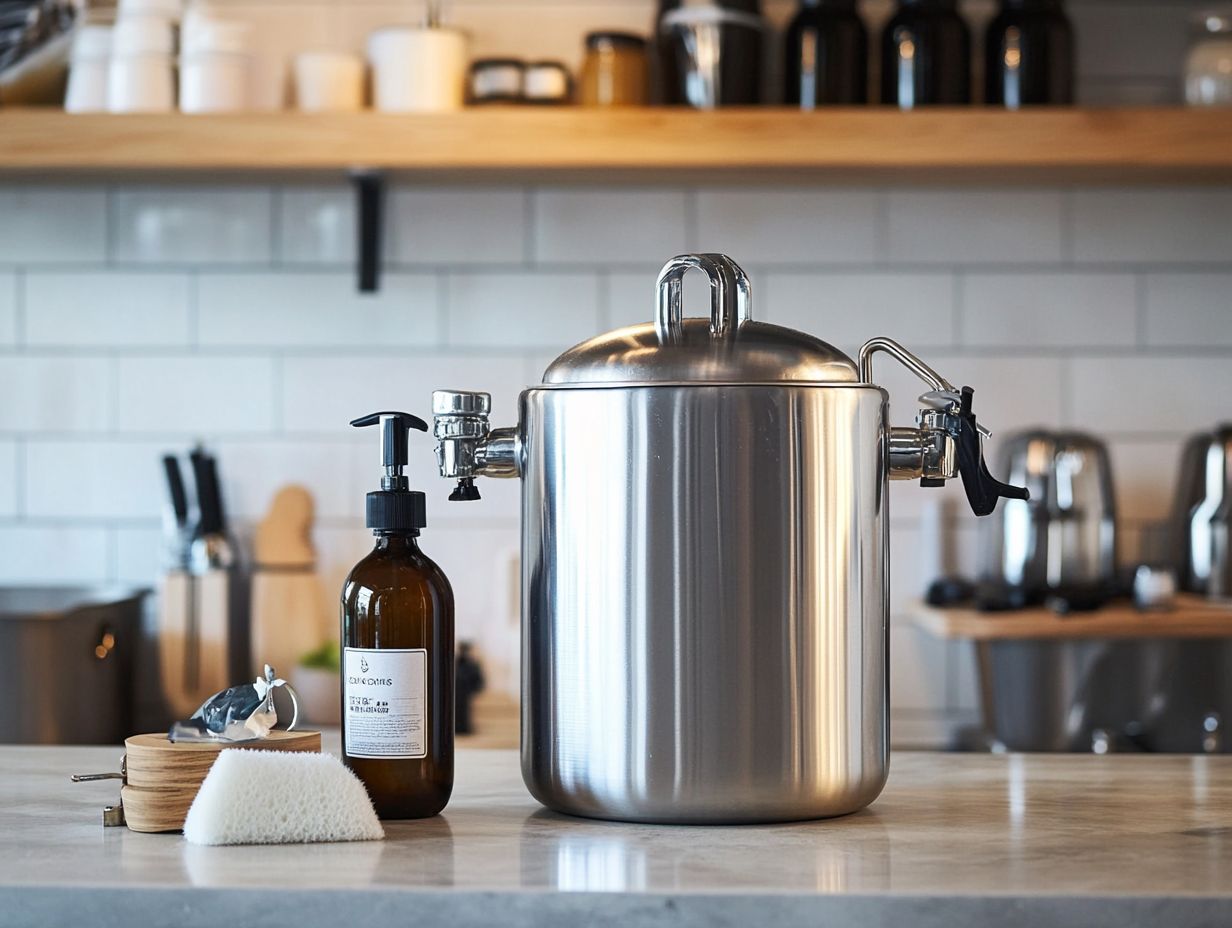
The final step in your cleaning process is to sanitize all equipment using effective sanitizers like StarSan or Iodophor. This ensures that every surface receives thorough treatment for maximum protection against microbes. By following this systematic cleaning and sanitizing process, you uphold the highest standards of hygiene, ensuring that your brewing equipment remains in optimal condition for future brew days.
This step is essential! It ensures that any stubborn pathogens are completely gone and safeguards against potential contamination that could jeopardize the integrity of your final product. These sanitizers are effective in ensuring a thorough sanitization process.
Make sure to stick to the recommended contact time for each sanitizer. This is the minimum amount of time the sanitizer should be in contact with the surface to be effective. Using an appropriate cleaning agent like PBW or Oxiclean can enhance the cleanliness of your equipment.
Using the correct application technique whether spraying with a sprayer or soaking ensures even distribution and comprehensive coverage. It s vital to understand the difference between cleaning and sanitizing. While cleaning removes dirt and organic matter, sanitizing specifically targets and reduces harmful organisms, underscoring the importance of this step in maintaining a safe and health-conscious environment.
Tips for Maintaining Clean Brewing Equipment
To maintain your brewing equipment in pristine condition, it s crucial to embrace a proactive maintenance routine. This includes regular cleaning with appropriate agents and proper storage techniques to prevent microbe growth.
As a homebrewer, consistently utilizing effective cleaning agents like PBW and sanitizing solutions after each brew day and bottling day is key to eliminating any residual bacteria or microbes that could compromise future batches. Furthermore, creating a checklist or schedule will aid you in sustaining cleanliness, ultimately enhancing the quality and flavor of your beer over time.
Common Mistakes to Avoid When Cleaning Brewing Equipment
Cleaning your brewing equipment is vital for top-notch beer. Don t let these common mistakes ruin your hard work. When you clean your brewing equipment, it s all too easy to slip up and compromise the quality of your beer. Simple oversights, like neglecting to sanitize or not rinsing thoroughly after using cleaning agents like dish soap or bleach, can have a significant effect.
Many homebrewers might underestimate the influence of lingering dirt and microbes, which can introduce off-flavors and spoilage. Dirt buildup on the surface of equipment like fermentors and bottles can be particularly problematic. To steer clear of these common traps, it s essential for you to recognize these mistakes and learn how to address them.
This knowledge is key to sustaining a successful brewing practice. Proper use of equipment, understanding the brewing process, and maintaining cleanliness will ensure the safety and quality of your homebrew.
Frequently Asked Questions
What tools do I need to properly clean my brewing equipment?
To properly clean your brewing equipment, you will need a mixture of hot water and a cleaning solution like PBW (Powdered Brewery Wash) or Oxiclean, which are specifically designed for brewing equipment. Additionally, you will need a soft sponge or cloth, a long-handled brush, a hose, and a container large enough to hold your equipment.
Why is it important to regularly clean my brewing equipment?
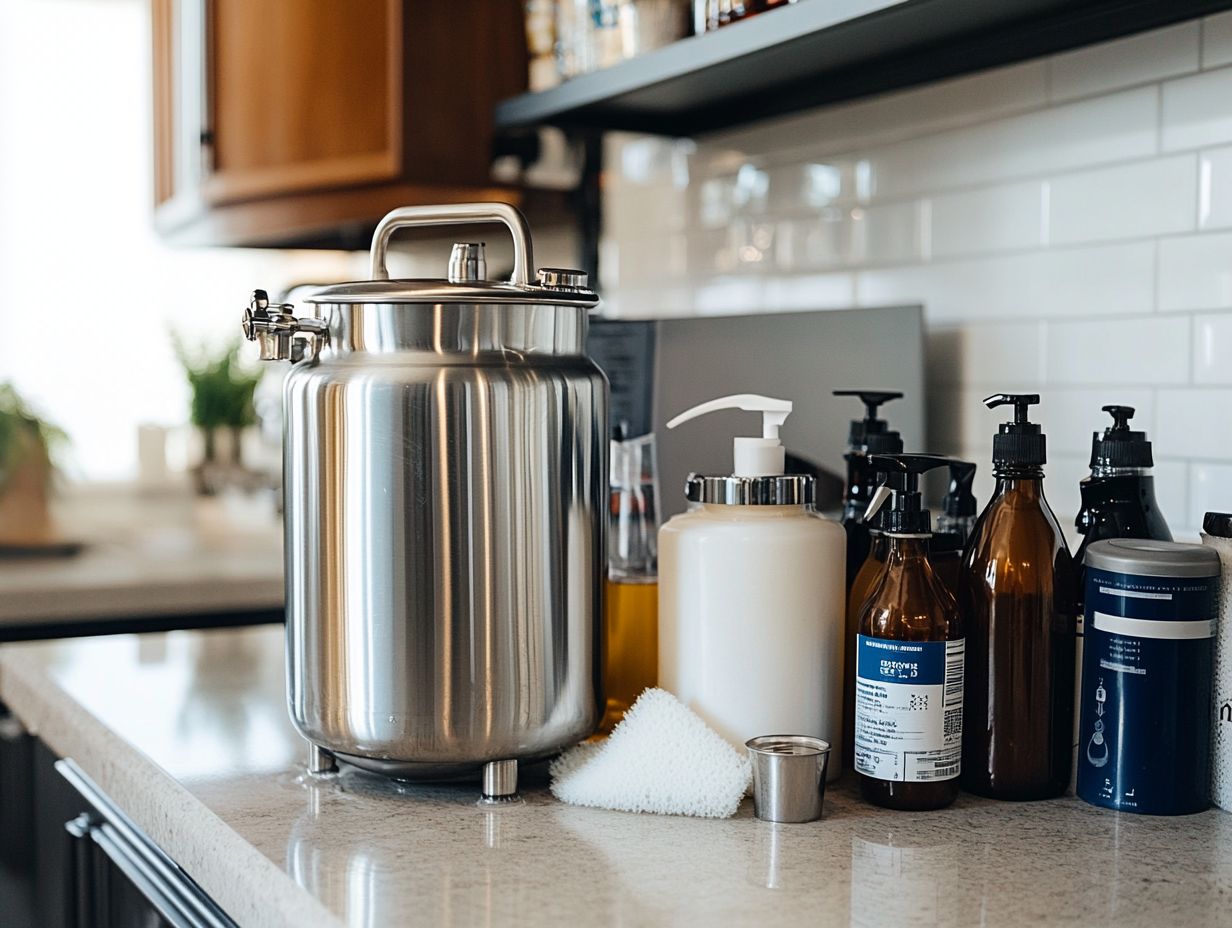
Regularly cleaning your brewing equipment is crucial for maintaining the quality and taste of your beer. If left uncleaned, residue, dirt, and bacteria can build up, leading to off-flavors and potential health hazards. Food-safe cleaning agents and sanitizers keep your equipment clean and safe.
How often should I clean my brewing equipment?
It is recommended to clean your brewing equipment after each use. This removes leftover ingredients, such as hops and yeast, before your next batch. Deep clean your equipment every few months to prevent any buildup. Using an alkaline detergent can help break down tough residue.
Can I use regular household cleaners to clean my brewing equipment?
No, it is not recommended to use regular household cleaners to clean your brewing equipment. These cleaners may contain harsh chemicals that can leave a residue or alter the flavor of your beer. It is best to use a cleaning solution like PBW or Oxiclean specifically designed for brewing equipment to avoid any contamination.
How should I clean my brewing equipment?
Start by rinsing your equipment with hot water to remove any leftover ingredients. Then, fill your container with hot water and the recommended amount of cleaning solution, such as PBW. Let your equipment soak for the recommended time. Use a soft sponge or cloth to scrub away any residue. Finally, rinse thoroughly with hot water and let air dry.
Avoid using bleach or dish soap as they can leave harmful residues.
Is it necessary to sanitize my brewing equipment after cleaning?
Yes, it is necessary to sanitize your brewing equipment after cleaning. Sanitizing removes any remaining bacteria or microbes that may have survived the cleaning process. It’s important for preventing contamination and ensuring the quality and safety of your beer. Using brands like StarSan or Iodophor can be effective in this process.

